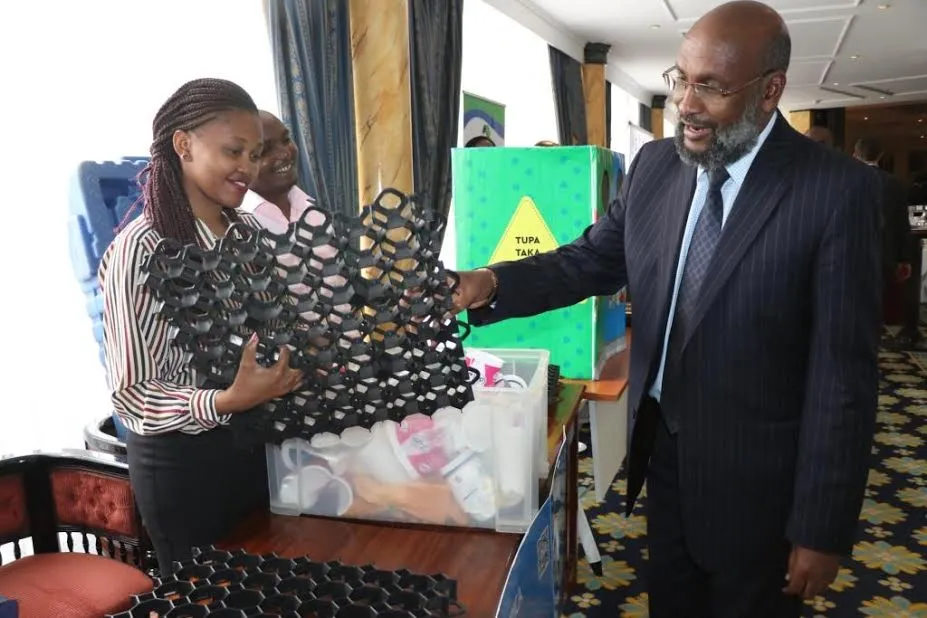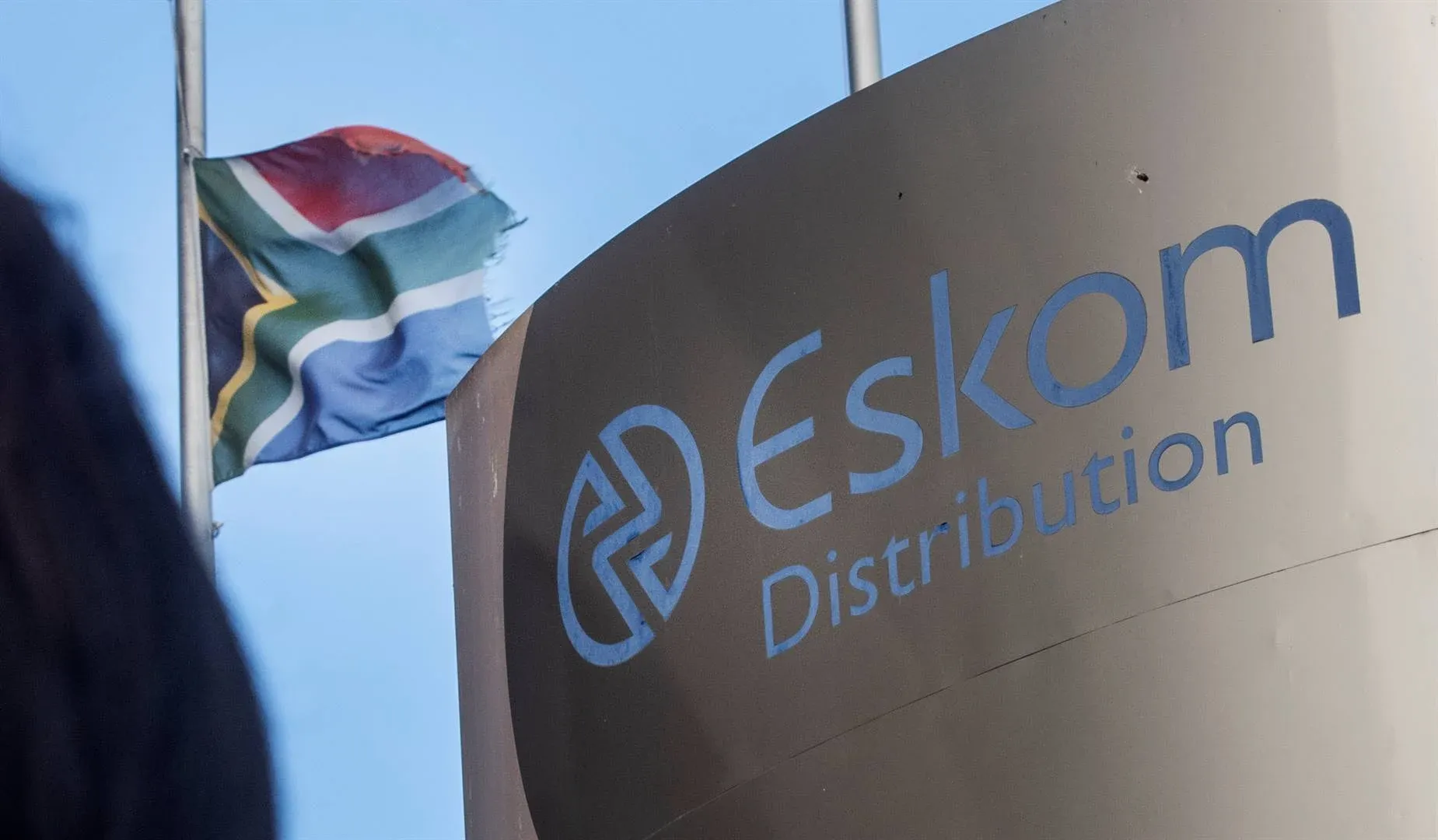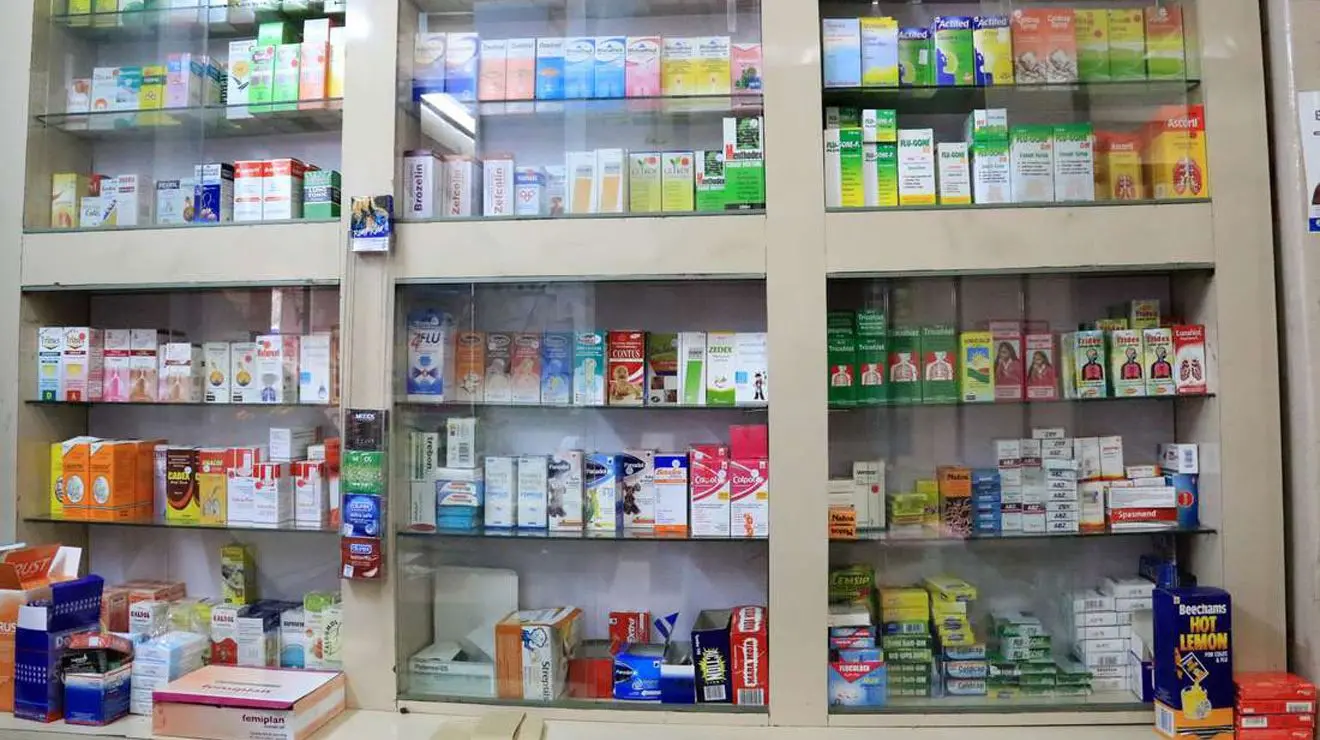What’s Being Rolled Out
The Kenyan government, through the Social Health Authority (SHA), is introducing the National Emergency Ambulance Dispatch Service. The aim is to strengthen emergency medical response across the country by centralizing dispatch, standardizing ambulance charges, and using digital tools. Health Cabinet Secretary Aden Duale announced the plan during a visit to Vihiga County, as part of a tour assessing health infrastructure. (Kenya News Agency)
Build the future you deserve. Get started with our top-tier Online courses: ACCA, HESI A2, ATI TEAS 7, HESI EXIT, NCLEX-RN, NCLEX-PN, and Financial Literacy. Let Serrari Ed guide your path to success. Enroll today.
Under the service:
- Patients will be evacuated rapidly, with payment determined by distance.
- SHA will absorb the transport cost and all hospital medical expenses incurred during the first 24 hours after admission.
- The fee structure is set at Sh4,500 for the first 25 kilometers, and Sh75 for every additional kilometer beyond that.
Ambulances will be dialed via the 999 emergency number, and infrastructure (digital dispatch, GPS tracking etc.) is being deployed nationwide, including in remote areas. SHA’s CEO, Dr. Mercy Mwangangi, emphasized that this model, integrated under the government’s Taifa Care initiative, is designed to deliver Universal Health Coverage (UHC) more effectively.
Why This Matters: The Problem Being Solved
Kenya’s emergency medical services (EMS) have long faced systemic issues:
- Disjointed dispatch and emergency transport services, particularly in rural counties, contribute to long delays for critical cases.
- Costs of ambulance transfers are often unpredictable, burdensome for patients, especially when emergencies strike far from well-serviced areas.
- Inadequate tracking and coordination mean that even where ambulances exist, response times can be slow.
Research by Rescue.co (a digital EMS coordination platform) indicates that ground in Kenya has been lost due to fragmented ambulance fleets, slow referral systems, and lack of centralized dispatch tools. In areas where Rescue.co was operating, average response times in rural settings dropped from many hours to under 30 minutes after deployment of digital dispatch tools. (Rescue.co case study)
How the Service Will Function
The new SHA emergency ambulance service includes:
- Centralized dispatch: All emergency calls will be processed through a unified system, using digital tools for assignment of ambulances, monitoring, and tracking.
- Standard pricing: As said, fixed base fee plus per‐kilometre charges to avoid unpredictable costs.
- 999 Hotline: A single toll-free number for emergencies. This is already recognized as Kenya’s official emergency line for ambulance, police, and fire services. (Trek Medics database)
- 24-hour hospital coverage: SHA will pay not only for transport, but also for the first 24 hours of care in facilities after arrival.
- Digital infrastructure & staff training: The rollout includes upgrading equipment, training emergency response personnel, installing tracking and dispatch tech across counties to ensure consistent, timely responses.
Where It Fits in Kenya’s Health Policy
The ambulance dispatch rollout is being tied into larger health strategy frameworks:
- Taifa Care: Kenya’s model for providing comprehensive Universal Health Coverage. Integrating emergency ambulance services under this framework helps cover transport, early care costs, and standardization of service.
- Social Health Authority (SHA): The body responsible for transitioning many health finance and service delivery functions. SHA was set up under recent reforms to replace or complement NHIF, aiming to better manage health financing, emergency funds, and chronic illness coverage. (SHA registration efforts)
- Kenya Emergency Medical Care Strategy 2020-2025: The plan that recognized the need to improve EMS capacity, ambulance services, dispatch systems, and ensure appropriate coverage for emergencies across both urban and rural areas. The current initiative is a direct step toward achieving the goals laid out in that strategy. (Kenya EMS strategy)
Expected Benefits
- Timely Response: With centralized dispatch and digital tracking, ambulances should reach emergencies faster, especially where delays have cost lives (trauma, obstetric emergencies, acute illness).
- Cost predictability and financial protection: The standard charges reduce surprises. Patients won’t have to bear transport and early medical costs, which can be crippling for low-income households.
- Coverage in remote areas: By ensuring ambulance availability across counties and integrating tracking, even far-flung regions can have more reliable access.
- Improved accountability and monitoring: Digital tools allow the government to track service performance, response times, number of ambulances, and gaps.
- Health system integration: Since the ambulance service is part of UHC via SHA, emergency transport becomes part of routine health planning rather than a patchwork of private or ad-hoc services.
One decision can change your entire career. Take that step with our Online courses in ACCA, HESI A2, ATI TEAS 7, HESI EXIT, NCLEX-RN, NCLEX-PN, and Financial Literacy. Join Serrari Ed and start building your brighter future today.
Challenges and Risks to Watch
While promising, there are several challenges that could affect implementation:
- Network and infrastructure limitations: In remote or rural counties, weak mobile or internet connectivity could hinder real-time tracking or dispatch.
- Adequate fleet and staffing: Existing ambulance stock, especially in certain counties, may be insufficient. Training, maintenance, fuel, drivers, paramedics — all need to scale.
- Sustainability of funding: While SHA is covering initial expenses (transport + first 24h care), the cost base will be high. Ensuring funding (both from government and donor sources) is consistent will be crucial.
- Public awareness: Many Kenyans may not know that 999 is usable for ambulance calls or expect standardized charges. Misconceptions or taking private transport may persist.
- Equity challenges: Even with standard charges, physical distances and road quality can make travel times or ambulance dispatch uneven.
- Coordination with counties: Health service delivery is devolved; counties must adopt, coordinate, and co-finance parts of the system. Overlapping mandates, delays in procurement etc. might impede rollout.
What We Know from Case Studies & Peer Examples
- Rescue.co in Kenya has used a tech stack (GPS, mobile apps, cloud-dispatch, routing) to coordinate over 47,000 emergency responses across all 47 counties, linking hundreds of ambulance providers and health facilities. Their experience demonstrates what digital tools can deliver when scaled. (Rescue.co outcomes)
- Platforms like Rescue.co also illustrate that average response times in urban Kenya (e.g. Nairobi) have dropped dramatically using centralized dispatch and mapping technologies, from many tens or even over 100 minutes down to under 15 minutes. In rural areas, similar reductions have occurred, bringing response under 30 minutes in many cases.
- Internationally, other LMICs that have implemented unified dispatch systems or emergency number frameworks often face the same hurdles (funding, rural coverage, staff, infrastructure), but find big gains in mortality and morbidity from trauma, childbirth emergencies, heart attacks etc.
Regulatory & Financial Implications
- The standardization of ambulance charges (Sh4,500 + Sh75/km) means SHA needs clear budgetary projections. Transport distances, number of calls, ambulance wear & tear etc. will affect cost overruns.
- SHA must ensure transparent procurement, maintenance, accountability of ambulance fleets. Mismanagement could erode trust.
- For SHA, integrating ambulance dispatch with hospital financing (covering first 24 hours) implies that hospitals must also gear up for faster patient intake, triage, and care readiness.
- Regulatory oversight (licensing, quality standards for ambulances and staff) will need enforcement. Standards for ambulance equipment, training for paramedics or EMTs, and cleanliness of referral pathways need definition and monitoring.
Current Status & Timeline
- Digital infrastructure training and deployment are underway according to SHA statements.
- Operationalizing the 999 hotline for ambulance service will require both technical readiness and public information campaigns.
- Integration under Taifa Care suggests the service will be rolled out in phases, likely starting with more accessible counties and then scaling to remote areas.
- SHA’s registration efforts have been in motion since at least mid-2024 in several counties, including Elgeyo Marakwet, as part of onboarding citizens and clarifying service entitlement. (SHA registration drive)
- Full deployment timeline has not been publicly detailed, but monitoring reports and audits are expected to begin once dispatch centers and digital tracking are functional.
Comparisons & Lessons from Other Systems
- Rescue.co offers a blueprint: combining public and private ambulance fleets, digital dispatch, GPS tracking, hospital alerts. It shows that even with limited resources, scaling is possible with partnerships and tech.
- In other LMICs (e.g. parts of India, Nigeria, South Africa), introducing centralized dispatch and emergency numbers has led to improved maternal and trauma outcomes. But success often depends on reliable roads, ambulance availability, communications networks, and community awareness.
- Globally, WHO and the Kenya Emergency Medical Care Strategy 2020-2025 both recognize that emergency care systems are urgent components of achieving Universal Health Coverage. Kenya is now moving to align its ambulance response more fully with those strategies.
What to Watch Next
- Response Times: Once rollouts occur, data on ambulance response times (urban vs rural) will measure whether this improves outcomes.
- Utilization Rates: How often will people call 999 for ambulances under SHA? Are there barriers to usage (awareness, phone access, perceived cost)?
- Cost Management: Whether SHA can sustain covering transport plus hospital first 24 hours; whether charges remain affordable; how ambulance maintenance and staff costs are managed.
- Coverage Equity: Whether remote counties will get equitable service; whether infrastructure (roads, networks) allows acceptable response.
- Public Awareness & Behavior: How fast communities adopt the service; whether people trust the system; whether they shift from self-transport during emergencies.
- Regulation & Oversight: Monitoring quality of services, ambulance safety and equipment, staff professionalization, digital privacy, and data governance.
Bigger Picture: UHC & SHA’s Role
The National Ambulance Dispatch Service is part of the broader Universal Health Coverage movement in Kenya. SHA is being positioned to replace or supplement parts of NHIF, especially around pooled health financing, emergency chronic illness funding, and ensuring health services are accessible and affordable for all citizens.
The emergency service fills in a crucial gap: transport and early care are often neglected in many health systems. Without reliable ambulance access, many emergency cases result in delayed treatment, worse outcomes, or higher costs (when private transport is used).
Conclusion
Kenya’s rollout of a centralized, digitized emergency ambulance dispatch service under SHA marks a major step towards improving emergency care across the country. By standardizing charges, using tech for dispatch and tracking, and covering transport plus early hospital cost, the service has potential to save lives, especially in remote areas, while reducing financial pressure on patients.
For this initiative to succeed, however, execution will be key: strong infrastructure, staff training, public awareness, regulatory oversight, and sustainable funding must all come together. If done right, this model can position Kenya as a leader in emergency medical services in Africa, and an example of how to integrate urgent transport into UHC frameworks.
Ready to take your career to the next level? Join our Online courses: ACCA, HESI A2, ATI TEAS 7 , HESI EXIT , NCLEX – RN and NCLEX – PN, Financial Literacy!🌟 Dive into a world of opportunities and empower yourself for success. Explore more at Serrari Ed and start your exciting journey today! ✨
Track GDP, Inflation and Central Bank rates for top African markets with Serrari’s comparator tool.
See today’s Treasury bonds and Money market funds movement across financial service providers in Kenya, using Serrari’s comparator tools.
Article, Financial and News Disclaimer
The Value of a Financial Advisor
While this article offers valuable insights, it is essential to recognize that personal finance can be highly complex and unique to each individual. A financial advisor provides professional expertise and personalized guidance to help you make well-informed decisions tailored to your specific circumstances and goals.
Beyond offering knowledge, a financial advisor serves as a trusted partner to help you stay disciplined, avoid common pitfalls, and remain focused on your long-term objectives. Their perspective and experience can complement your own efforts, enhancing your financial well-being and ensuring a more confident approach to managing your finances.
Disclaimer: This article is for informational purposes only and does not constitute financial advice. Readers are encouraged to consult a licensed financial advisor to obtain guidance specific to their financial situation.
Article and News Disclaimer
The information provided on www.serrarigroup.com is for general informational purposes only. While we strive to keep the information up to date and accurate, we make no representations or warranties of any kind, express or implied, about the completeness, accuracy, reliability, suitability, or availability with respect to the website or the information, products, services, or related graphics contained on the website for any purpose. Any reliance you place on such information is therefore strictly at your own risk.
www.serrarigroup.com is not responsible for any errors or omissions, or for the results obtained from the use of this information. All information on the website is provided on an as-is basis, with no guarantee of completeness, accuracy, timeliness, or of the results obtained from the use of this information, and without warranty of any kind, express or implied, including but not limited to warranties of performance, merchantability, and fitness for a particular purpose.
In no event will www.serrarigroup.com be liable to you or anyone else for any decision made or action taken in reliance on the information provided on the website or for any consequential, special, or similar damages, even if advised of the possibility of such damages.
The articles, news, and information presented on www.serrarigroup.com reflect the opinions of the respective authors and contributors and do not necessarily represent the views of the website or its management. Any views or opinions expressed are solely those of the individual authors and do not represent the website's views or opinions as a whole.
The content on www.serrarigroup.com may include links to external websites, which are provided for convenience and informational purposes only. We have no control over the nature, content, and availability of those sites. The inclusion of any links does not necessarily imply a recommendation or endorsement of the views expressed within them.
Every effort is made to keep the website up and running smoothly. However, www.serrarigroup.com takes no responsibility for, and will not be liable for, the website being temporarily unavailable due to technical issues beyond our control.
Please note that laws, regulations, and information can change rapidly, and we advise you to conduct further research and seek professional advice when necessary.
By using www.serrarigroup.com, you agree to this disclaimer and its terms. If you do not agree with this disclaimer, please do not use the website.
www.serrarigroup.com, reserves the right to update, modify, or remove any part of this disclaimer without prior notice. It is your responsibility to review this disclaimer periodically for changes.
Serrari Group 2025












